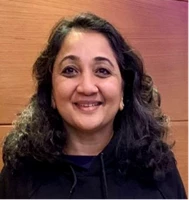
When considering support for refugees and their host communities, gender based violence (GBV) is a great concern that requires special care and attention.
Unfortunately, violence against women and girls is all too common in many countries across the globe. Drivers of GBV include entrenched social norms that perpetuate power imbalances between men and women, and more generally circumscribe women’s agency and voice in communities and in the home. Despite a recent increase in reporting, data suggest that 45 percent of women who have experienced GBV did not seek help or tell anyone, and there are striking regional differences.
Gender inequalities and risks of GBV are particularly pronounced in refugee hosting communities. Across the Horn of Africa, where we are supporting the Kenya Development Response to Displacement Impacts Project (DRDIP), daily interactions between hosts and refugee communities imply complex and fluid dynamics. The interactions range from refugee-host, employer-employee, trader-consumer, marriage-friendship, patron-client (including survival sex) to master-servant and perpetrator-survivor.
The Social Assessment conducted for Kenya DRDIP revealed that specific efforts would be required to reach women and girls in communities hosting refugees in Garissa, Wajir, and Turkana counties in Kenya as part of project interventions. This is to ensure that women and girls are aware of project activities, participate in the planning, implementation and oversight processes; and benefit from the investments in basic social services, economic opportunities, and environmental management – the focus areas of the project.
The project identified key intervention areas to include multiple modes of communication and outreach for awareness raising to ensure outreach to women and girls; creating an enabling environment for women’s participation by enlisting support of village elders and others respected and trusted by community; inclusive community meetings ensuring substantial presence of women or separate meetings for women when required; and quotas for women beneficiaries of 50 percent in livelihoods support.
Early into project design and implementation of the Kenya DRDIP, we realized that there were many questions that we needed to ask: What was the relationship between potential GBV-related safety risks and subproject interventions in the three key investment areas of the project? Also, how could subprojects be designed to reduce exposure to GBV for women and girls in the target communities?
While enhanced women’s participation in implementation and benefits was envisaged, and there was a commitment from the government to address GBV risks during implementation, there was much that we had to learn.
This led us to adjust existing and proposed interventions, and particular attention to issues such as (i) safety and security risks for particular groups in the target communities were identified, (ii) age-, gender-, and culturally appropriate ways to facilitate participation of groups in the planning, design, implementation, and monitoring and evaluation of programs were included in the Community Operations Manual – including women community facilitators, women only groups; (iii) community awareness, capacities and strengths of project beneficiary communities, implementing partners and government staff in preventing and reducing risks of GBV; and (iv) mapping of the existence of and gaps in services for survivors.
We specifically focused on developing practice notes that looked at specific actions within and across different subsector investments of the project to both prevent and mitigate GBV risks as well as indicators to monitor impacts of the proposed actions. We developed practice notes for six sectors - health, education, livelihoods, labor-intensive public works, energy, and water, sanitation and hygiene in collaboration with the National Project Implementation Unit and UNHCR.
We hope that these practice notes will help to ensure a GBV-risk informed implementation process for the Kenya DRDIP. Training of implementing agency staff at the national and county levels and staff of NGO Facilitating Partners is key, so that we can all contribute to address GBV risks.


Join the Conversation